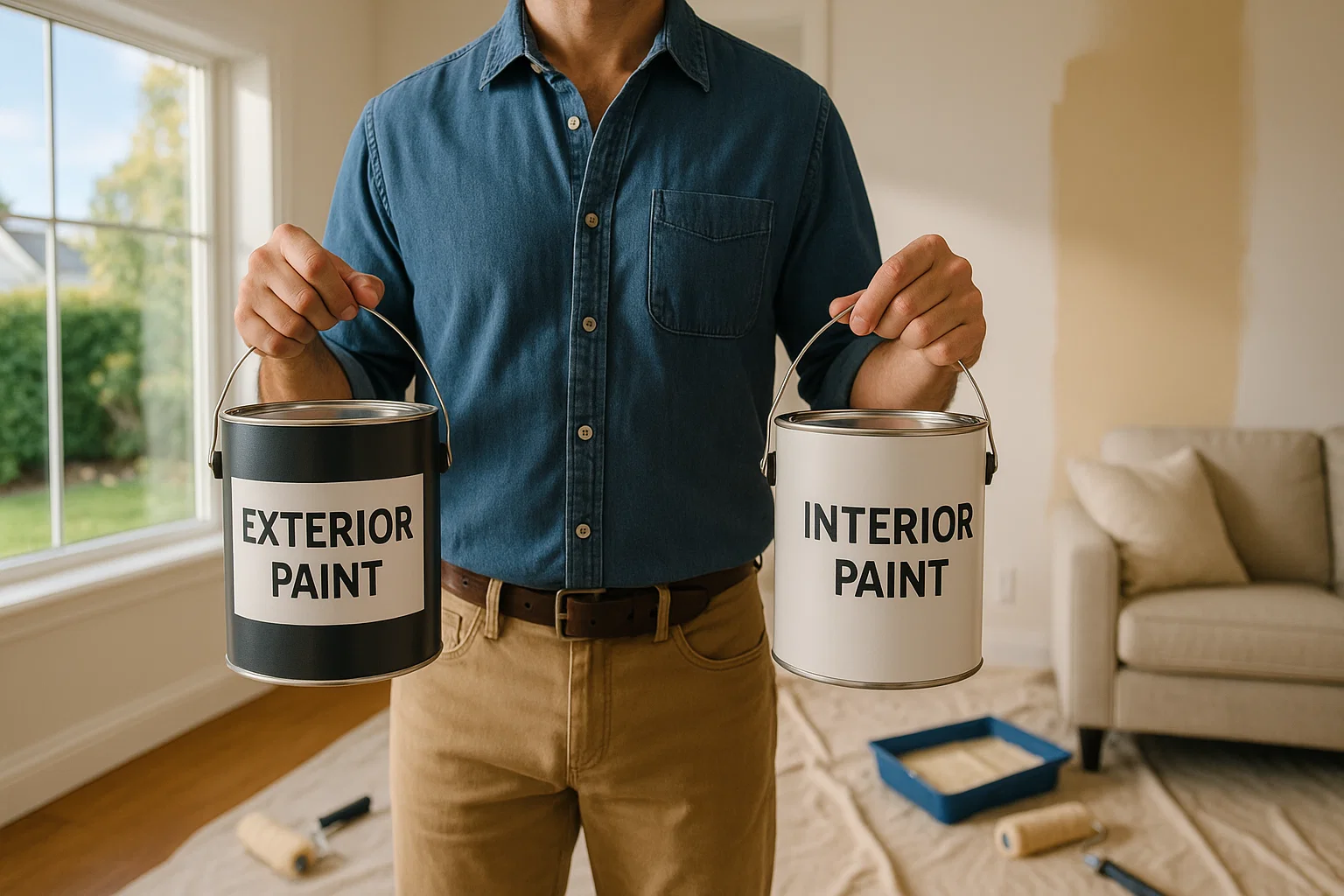If you have ever run out of interior paint mid-project, then you might have wondered: Can I just use my leftover exterior paint inside the house? It is a common question and an important one. They are particularly designed for different environments, while both types of paint serve the same purpose. It is important to know that the exterior painting products are made to withstand rain, sunlight, and temperature changes, but those same properties can make them less suitable for indoor use.
I did speak with professionals from Hue Renew Painting when I started researching this topic, who explained that not all paints are interchangeable. The exterior formulations do contain additives and resins which is meant for outdoor durability and not for the confined air of your living room.
Why is exterior painting different from Interior Painting?
The biggest difference between exterior painting and interior painting lies in how the paints are made in the first place. The exterior paint has been engineered to handle the harsh weather, UV exposure, and moisture. They do often include flexible resins that expand and contract with temperature changes, plus additives that resist mold and mildew.
However, the interior paints are designed for aesthetics, which include easy cleaning and safety. They do not need the same weatherproof qualities but must meet stricter indoor air safety standards. The usage of exterior paint indoors might seem harmless, but it can lead to problems related to air quality, texture, and even longevity.
What Happens If You Use Exterior Paint Inside
The exterior painting products may seem more durable at first, but they contain higher levels of volatile organic compounds (VOCs). These chemicals do evaporate as the paint dries, which ends up creating strong odors that can cause headaches or dizziness in poorly ventilated spaces. The fumes might linger for days and pose long-term respiratory risks if exposure continues.
The exterior paints often dry to a thicker and tackier texture indoors, besides that. They may attract dust or fail to cure properly without sunlight and airflow. To be precise, the paint will look and feel different and not in a good way.
When Exterior Paint Might Be Okay Indoors
There are limited cases where exterior painting indoors could make sense, while it is generally not recommended. For instance, the exterior paint may hold up better against the moisture and temperature swings in detached garages, basements, or enclosed porches that face outdoor conditions.
If you do choose to use it in such areas, then you need to make sure that there’s proper ventilation during and after application. Professionals will definitely suggest looking for paints that are labeled “interior/exterior,” which offer balanced durability with lower VOC levels. They make them safer for semi-indoor use.
Indoor Air Quality and Health Concerns
There is another reason to avoid using exterior paint inside is the potential impact on your home’s air quality. It is necessary to know that exterior painting products do include additives that fend off mildew, UV damage, and insects, but these can release the toxins that linger indoors. Their prolonged exposure may lead to irritation, allergies, or other health issues, too.
Even though newer exterior paints are less toxic than older ones but they are still not designed for the constant indoor exposure. Interior paints do follow stricter Environmental Protection Agency (EPA) guidelines for safe indoor use, which ensures that you and your family breathe cleaner air.
How It Affects Appearance and Durability
Using exterior painting products indoors might also leave walls looking glossier or uneven under interior lighting. These paints tend to have a rubbery or shiny finish, which can make the rooms feel unnatural. They are also harder to clean, and scrubbing can cause streaking or peeling.
On the other hand, the interior paints are smoother, easier to maintain, and designed to stay looking fresh despite frequent cleaning. They are also available in more finishes suitable for indoor lighting, from flat matte to soft satin.
Final Thoughts
In the end, the exterior painting should be reserved for outdoor projects. These paints are certainly formulated to stand up to sun, rain, and temperature changes. They are not designed to keep your indoor spaces safe, and using them inside can cause odor, texture problems, and potential health hazards.
If you are having doubts, then consult trusted professionals like Hue Renew Painting to help you in choosing the right paint for your project. Your walls will look stunning, last longer, and remain safe for everyone in your home with the right guidance and materials.
FAQs
What happens if I use exterior paint indoors?
It can release higher VOCs, create strong odors, and possibly cause health issues.
Can I use exterior paint in a garage or porch?
Yes, but only if the space is well-ventilated and exposed to the outdoor air.
Is exterior paint more durable than interior paint?
It is more weather-resistant but not better indoors.
Are low-VOC exterior paints safe for indoor use?
Even low-VOC versions aren’t ideal for enclosed spaces due to the lingering emissions
What’s the best paint for indoor projects?
Choose premium interior paints made for easy cleaning, low odor, and lasting finish.





